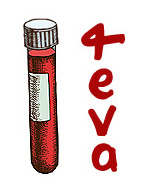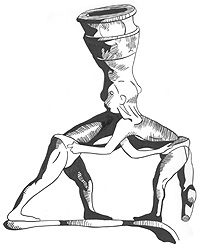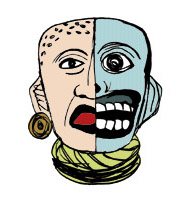“One side stands on the sacred
mountain attempting to raise the
ancients from the center of the earth...”
-Brian William Jеwell, Sanity's Edge, lines 1-3, from Meditations on Madness, page 36
In 2009 I wanted to finally write a big novel, the start of a 21-volume series on time travel, which would enable me to set fiction in various periods of interest, and necessarily in the future. For, so far as I know, time travel has yet to be developed. Of course, there are entire categories of science-fiction readers who will never read a book on time travel because they say—in their infinite omniscience about the cosmos—that it cannot be done. [1]
But I wondered, if it could be done, what might it be like? In other words, if people had this capacity, what would they do with it?
The answer, was, I mused, that different kinds of people would do different things with that technology, some selfish and some altruistic.
On this site, way back on the fiction page, from I think 2012, is a short novel titled This Design is Called Paisley it is a Sunset Saga side story, like the Sunset Saga inspired by my life experiences. I will discuss the generation of these two stories as investigations into the human condition along with the objections lodged by some few readers. [2]
To my knowledge, only three people have read The Sunset Saga, SS Sam, patrolling the concertina wire compound on the Chilean-Bolivian Border, my friend Tony and his 11-year-old son Dominic. All three have professed to enjoy the series. These are likely to be the only readers, I think, since in the next installment of this article series, I am going to give away the ending. In this article I give away the plot secrets revealed over the first 5 novels written, which I have done in the posthumous prequel that heads the list below.
The Sunset Saga is comprised of:
-1. Out of Time, a prequel written to settle the problems readers had with my slow oblique exposition, as the story is written without God's vantage, with the reader only privy to what the various characters know of their condition.
-2. Big Water Blood Song, the first half of the original 1300 page Of the Sunset World
-3. Ghosts of the Sunset World, the second half of Of the Sunset World
-4. The World is Our Widow, ¼ of Pillagers of Time, a massive sequel to Of the Sunset World
-5. Beyond the Ember Star, part 2
-6. Comes the Six Winter Night, part 3
-7. Thunder-boy, part 4
-8. Beyond the Sunset Veil
-9. Den of the Ender
-10. God's Picture Maker
-11. Seven Moons Deep, written over 8 years from 2012-20
-12. Organa a barely related side novel, set in the same two future time frames as shown in Beyond the Ember Star, The World is Our Widow, Den of the Ender and Out of Time
-13. Astride the Chariot of Night, Jay Bracken's thread from God's Picture Maker and Seven Moons Deep, published beginning in 2012 with By This Ax! And God of War.
-14. WhiteSkyCanoe, the conclusion of The Sunset Saga, written in my mind in 2009, which I have not permitted myself to write as I am superstitious about writing endings first. The 7 time travel novels I was going to write, Like the Archimedes Event, The Minos Event, The Alexander Event, and The Prophet and the Demon are either entirely discarded or placed in this final volume, which will eliminate all time travel not necessary to wrap up the narrative threads.
The narrative is conducted in alternating threads between protagonists with internal monologues.
The premise is absolutely liberal progressive, but the execution is brutality realistic, which means that conservative readers hate the premise and progressive readers hate the execution. That leaves libertarian types who read fiction, which I think is less than 100 people world wide.
The characterization is based on the Iliad, with the two key protagonists Charlie Robinson, an African American quantum physicist imagined as an aged and wise Nestor cast forward to the end of Time into a young body as weak as his old form, to collide with Achilles, in the form of Jay Bracken, a hyper-masculine, stupid, West Virginia redneck with a time preference so high that it's off the African charts, who runs into Charlie in a Baltimore City high school in the late 1990s and who is the fastest man on earth.
Initial readers scoff at a white man being fast and a black man being smart, thinking I was trying to be edgy in a liberal way. But Achilles was the fastest of men, and when I was a teenager, for a brief year, I was the fastest 13-year-old in Washington County Pennsylvania. I knew for a time what it was like to be an Achilles, hated by my gym teachers, beating up and terrorizing rival students and doomed to ultimate failure in all things.
Two female readers rejected This Design is Called Paisley for the black scientist. Lynn, even sent me various genetic studies demonstrating that junk DNA and other things absolutely bars any person of African descent from being a brilliant scientist. Even my staunchest reader rejected the premise!
The problem was, when I wanted a teenage Achilles and Nestor to be reunited in Baltimore City, the environment I knew the best and needed to write in, I based their meeting on my meeting with a nerd named Charlie at Pleasant Plains elementary school in Baltimore County and my eldest son's meeting of Dante Justine in far rougher Baltimore City schools a generation later. So, Jay was a composite of Dante, Achilles and my 13-year-old psychology. Charlie was a composite of my oldest son, Charlie and Lewis, the only black kid in my Baltimore County Junior high school, and Jonathan Legate the smartest kid in Trinity High School Washington, PA, who was killed running for a school bus overburdened by his books. I further laid in a tiny Asian kid who I body-guarded for in 2009 against giant black thugs near Washington D.C. as the template for Three-Rivers, the ultimate and transformative main character of The Sunset Saga.
So, with those influences, and wanting to use my Harm City urban blight work as a setting platform, I had to model American Achilles as the bodyguard of a nerd as Nestor stranded at the end of Time. In 1990s Baltimore, that nerd had to be black, like my employee Derrick White, a tender-hearted upstanding clerk who gained my unlimited admiration by being braver than me and my security guard combined, all 120 pounds of him.
So, even if I had been told ahead of time that no black man could invent a time machine, it didn't matter, he had to be black in that setting. No white nerd has attended Baltimore city public schools since I pulled my oldest son out in 1990.
Also, in science-fiction terms it does not matter. In the story, Charlie fails as a physicist and starts a science-based religion. Hundreds of years in the future, his acolytes discover his hand-drawn plans for a time machine and build it so that they can come back and get their Messiah into the Future. Their stated goal is to use these devices—for there are seven or nine—to go back in time and save extinct peoples, like the Native Americans.
Groan thinks the conservative reader.
But this is bullshit. The advanced time jumper base being set up is just a means of abducting people who were going to be genetic dead ends anyhow, and use them as breeding stock for an evil mastermind's generation ship which would take him to a far star as the god of his people. He also wanted certain brilliant men like Aristotle and Archimedes and Hiawatha [taken right before their untimely death] to be his dinner companions and wished the most beautiful Native American woman, the Lady of Caftochecie for his concubine. Rather than a progressive rescuing of Natives from European aggression—and of Neanderthals from modern human aggression—the entire operation has for its purpose the staffing of an inter-stellar palace of Caligula in space!
Groan and puke says the progressive reader.
Enter Three-Rivers, a handicapped Iroquois genius who, like Charlie, wins Jay Bracken's savage heart [Bracken turns out to be a genetic weapon designed to rape Neanderthal woman and form a seed population to farm for robust time slaves] and the two, an Achilles and a Nestor [indeed in Behind The Sunset Veil Aristotle is horrified by Bracken's bestiality and names him “The Beast Achilles”] revolt against their 29th century master and his 23rd century agents and 21st century puppets, and start a time war, a brutal retard and a sly gimp against The Apex AI Machine.
So, the black scientist failed in science and fades into a manipulated obscurity as his high school friend and protector assigns his brutal urge to be violent on behalf of the innocent to the little Indian Vegan [yep, the brat has a protein allergy]. Three-Rivers verily comes to the future he calls “The Sunset World” in order to learn at the knee of he who he calls Burnt Man, who he imagines is Bracken's [who he knows as DeathSong] creator. As it turns out Burnt Man, being Charlie, is an imprisoned puppet of a great and evil conspiracy of superior designed humans.
I wrote Out of Time because it takes the reader until Thunderboy, to finally figure this out. I had not originally understood how much an American reader demands to have godlike abilities to understand the book from far beyond the perspective of the protagonists, and had hoped they would be satisfied with knowing more than any single protagonist, of which there are near two dozen.
In the next installment I will spoil the ending of the as yet unwritten last novel. So, SS Sam and Big Tony, you might want to skip Part 4 and go to Part 5.
…
Notes
-1. The research for Seven Moons Deep would lead to the Plantation America history series which has exceeded in volumes and words The Sunset Saga
-2. This Design, number 5 in this series, will use that short novel to discuss the use of life experience in fiction.











